Surfshark VPN
Surfshark is an interesting VPN which comes crammed with features, runs almost everywhere and has one of the best value introductory deals around.
The network has 3,200+ servers distributed across an impressive 160+ locations in 65 countries.
There are Windows, Mac, iOS, Android and Linux apps, Chrome and Firefox extensions, and a website unblocking Smart DNS system for games consoles, smart TVs and more.
Whatever you're using, there's no need to worry about annoying 'simultaneous connection' limits – you can install and run Surfshark on as many devices as you like.
The service is excellent on the technical essentials, including strong AES-256-GCM encryption, WireGuard, OpenVPN and IKEv2 support, Shadowsocks to help you bypass VPN blocking, a no logs policy, and a kill switch to protect you if your connection drops.
- Want to try Surfshark? Check out the website here
There's real depth here. Android apps can see through most VPNs by requesting your physical location, but not Surfshark – a GPS Spoofing feature enables it to return the coordinates of your chosen VPN server.
Oh, there’s also URL and ad blocking, P2P support on most servers, VPN chaining (use two servers for one hop), split tunneling, the company's own zero-knowledge DNS servers, and 24/7 support via email and live chat if anything goes wrong.
Impressive. Especially as we've not even mentioned the updates since our last review.
Surfshark has put itself through a new security audit, for instance, this time looking at its servers.
App updates and improvements include version 3.0.0 releases for Windows and Mac, iOS and Android widgets, Apple M1 compatibility, and a split tunneling-like Bypasser system for the browser extensions.
Even more ambitiously, the company is branching out into the security world with the release of Surfshark One. This new security suite includes the VPN, an Avira-powered on-demand antivirus, an Alert system to warn you if your details appear in a data breach, and a privacy-friendly, ad and tracker-free internet search tool.
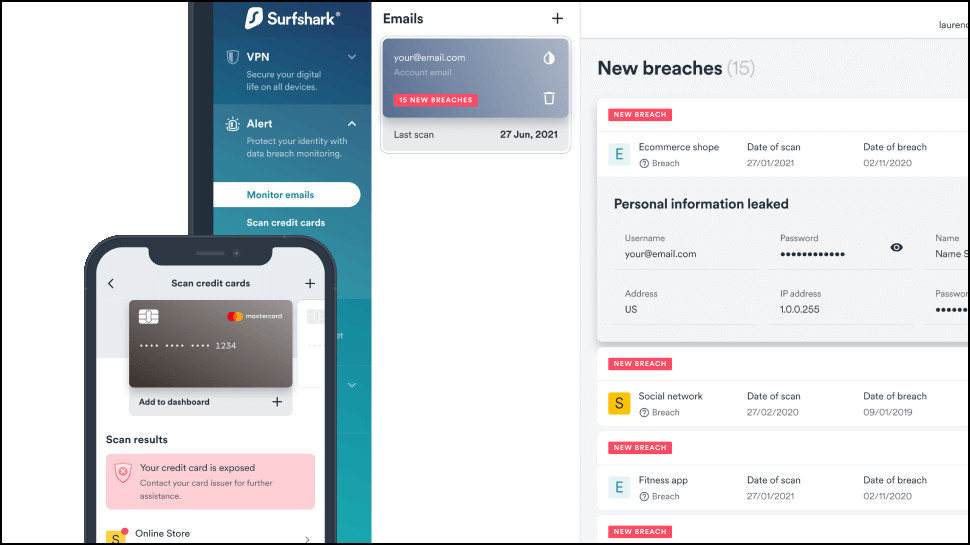
Surfshark pricing
As you'll see courtesy of our dedicated Surfshark price and deals guide, the service's monthly plan is more expensive than some, at $12.95, and paying for six months up-front still only cuts the cost to $6.49.
The 12 months + 12 months free plan is a great deal for the first term at $2.49, though, but it doubles on renewal to $4.98 for the annual plan.
That initial price beats most of the competition, but there are a few exceptions. Private Internet Access' three-year plan is priced at only $2.19 a month, for instance, and has a simple on-demand antivirus thrown in.
The new Surfshark One plan gives you all the same VPN features, and adds Avira-powered antivirus, data breach monitoring and privacy-friendly internet search. You can activate it for an extra $1.99 a month. Cheap? Well, it's a very basic setup. The antivirus supports on-demand scans, for instance, but doesn't have any real-time protection, so it's not a substitute for a full antivirus app.
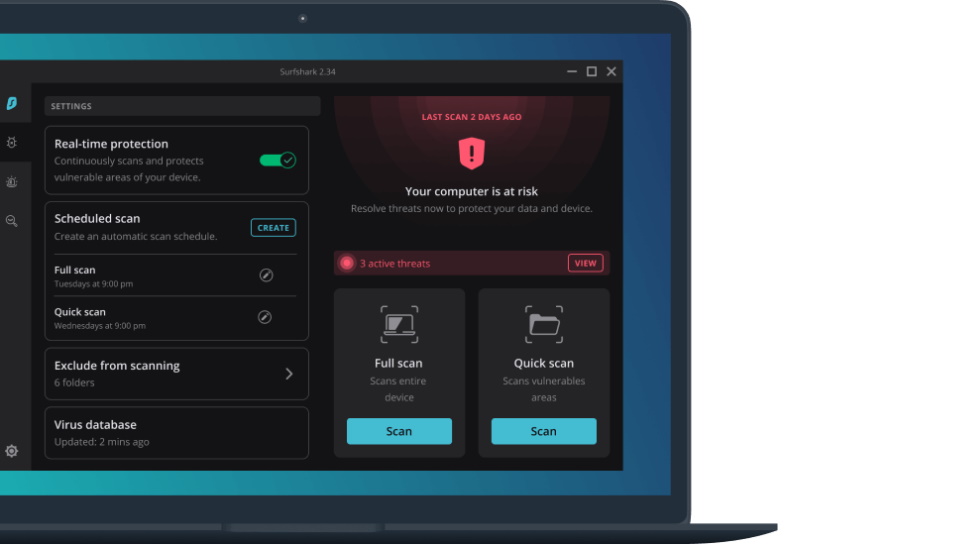
If security is a priority, keep in mind that most top antivirus companies now also include VPNs. Avast One gives you far more capable antivirus and security tools, and an unlimited VPN, for $3.99 a month in year one, $8.33 on renewal.
Surfshark's seven-day free trial for Android, iOS and Mac gives you some time to sample the service for yourself. We'd like something for Windows users, too, but it seems unfair to complain when many providers have no trials at all.
Surfshark even delivers more than you'd expect with its range of payment methods, with support for credit cards, PayPal, cryptocurrencies, Amazon Pay, Google Pay and Ali Pay.
But if, after all this, you sign up and find the company isn't for you, no problem – you're protected by a 30-day money-back guarantee.
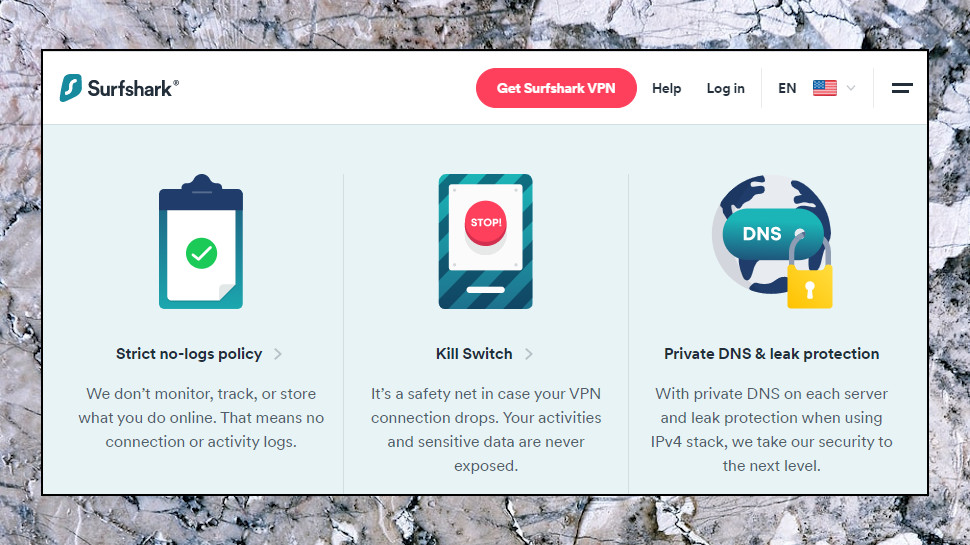
Privacy and logging
Surfshark's privacy features start with the VPN basics: secure protocols (OpenVPN UDP and TCP, WireGuard, IKEv2), AES-256 encryption, and a kill switch to block internet access and prevent identity leaks if the VPN connection ever fails.
But that's just the start. Surfshark has its own private DNS on each server to reduce the chance of others spying on your activities. And the ability to use a double VPN hop (connect to Paris, say, then leave the Surfshark network in New York) makes it even more difficult for anyone to follow your tracks.
Like ExpressVPN, Surfshark is based in the British Virgin Islands, and the company points out that this means it's not required to keep logs of user actions.
A FAQ page on logging spells this out, stating that Surfshark doesn't collect: 'Incoming and outgoing IP addresses; Browsing, downloading or purchasing history; VPN servers you use; Used bandwidth; Session information; Connection timestamps; Network traffic.'
The only data the company keeps about you is your email address and billing information, the FAQ explains.
The page used to say Surfshark collected some anonymous, aggregated stats – performance information, frequency of use of the system, unsuccessful connections, crash reports – but that detail has been removed.
We don't know why, but it's not solely because Surfshark doesn't record this data any more, as the Windows app Settings box still has a 'Collect anonymous crash reports' option. The installer doesn't ask for permission to enable this – it just turns it on by default – but if you're unhappy, and you notice the setting, you can turn it off with a click.
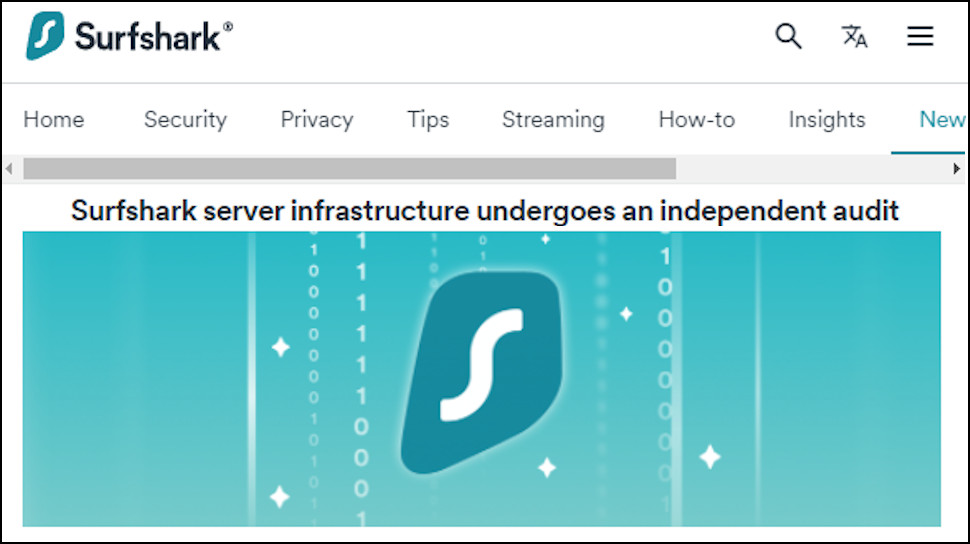
Audits
Privacy policies are important, but we don't think customers should have to take a VPN provider's words on trust. And that's why we're happy to see that Surfshark has put two areas of its service through an independent security audit.
In November 2018, the Germany security company Cure53 [PDF] put Surfshark's browser extensions under a very high-powered security microscope. The company only found a couple of small issues, and concluded that it was 'highly satisfied to see such a strong security posture on the Surfshark VPN extensions.'
That was good news in 2018, but it's less interesting years later, especially when it only examined such a limited area of the service.
In May 2021 Surfshark went further, though, reporting on a second Cure53 audit of its servers.
This audit had a much wider scope: 'To thoroughly examine and evaluate the security posture exposed by the Surfshark server, VPN configuration, as well as the related infrastructure.'
The auditors found only four security-related general issues, with a maximum severity of 'Medium.' If you're not used to reading Cure53 audits, that's not bad at all (they're exceptionally thorough and always find something).
The report concluded 'the overall outcome should be regarded as good' and Surfshark had a clear understanding of the challenges presented by VPN security.
Surfshark could have taken the audit a little further. It didn't verify Surfshark's no logging credentials, which feels like a missed opportunity. And the company has only published a summary of the report; we'd much prefer to see the full version.
Still, we're glad to see Surfshark take this audit, and the conclusions look good to us, but hopefully we'll see more detailed reports in future.
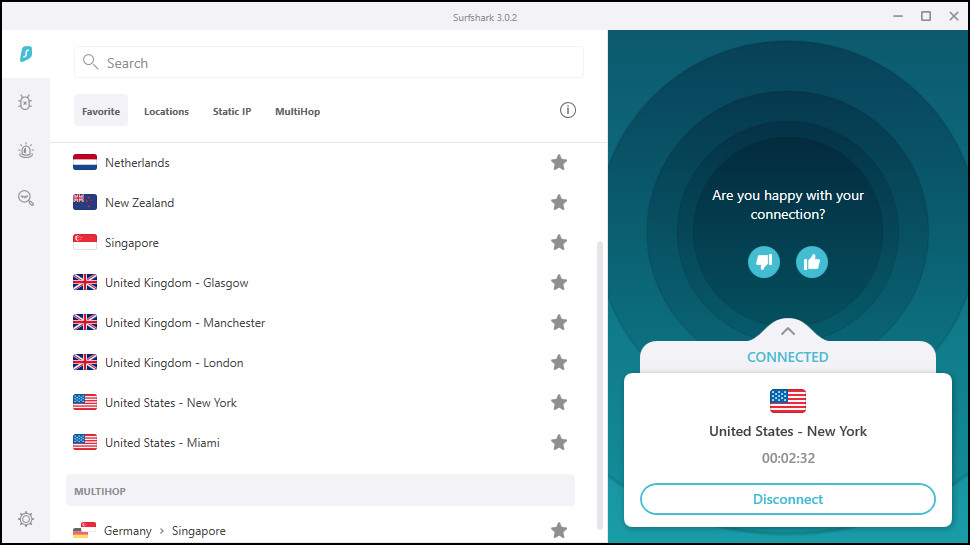
Windows app
Getting started with Surfshark was easy. We downloaded and installed the Windows client, chose the signup option, and were even able to select a plan and hand over payment from within the installer, no third-party browser required.
The Windows client interface is more versatile than most, adapting like a responsive website as you resize its window. At its smallest, the client looks much like any other VPN app, with a Connect button, status information and a list of locations. But expand or maximize the client window and it reformats to display new panels and options.
Getting connected is easy. Tap the button, desktop notifications tell you when Surfshark connects and disconnects, and the interface updates to display your new virtual location and IP address.
The Location list doesn't display latencies, but server load icons highlight your best (and worst) options, and a Favorites system enables managing commonly-used servers.
A Static IP list enables connecting to locations in Germany, Japan, Singapore, UK and US, and receiving a fixed IP from each one (that is, your IP will be from the country you choose, but it'll be the same every time you connect). That could be handy if you need to connect to an IP-restricted network while using the VPN, but keep in mind that any other Surfshark customer can use the same IP, so you'll need some extra layer of authentication.
Right clicking the Surfshark system tray icon displays a miniature app window, rather than the usual basic text menu, allowing you to connect to the fastest server, choose one of your most recent locations, or open the full app interface.
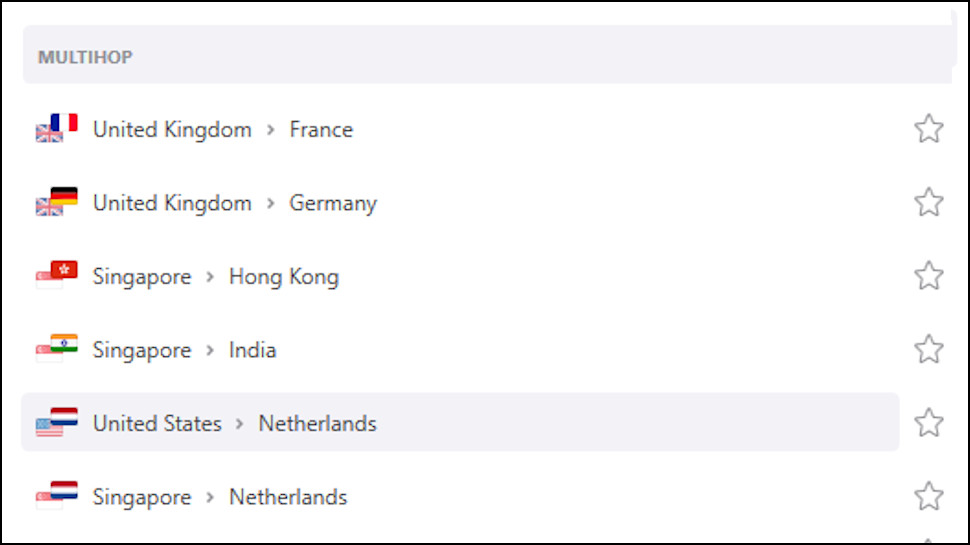
A MultiHop tab passes your traffic through two VPN servers, ensuring that even if the exit server is compromised, an attacker still won't have your real IP. There are 14 routes available, where the first server is your initial connection (options include US, Canada, UK, Singapore, Germany, France, India, Netherlands and Australia), and the second is where you'll appear to be to the outside world (France, Germany, Hong Kong, India, Netherlands, Portugal, Singapore, Sweden, UK, US). The idea is that even if the exit server is compromised, the attacker will still only get an anonymous IP.
A Whitelister panel enables creating whitelists of applications, websites and IP addresses that bypass the VPN (an expanded version of the split tunneling feature you'll see with providers like ExpressVPN). If using Surfshark breaks a particular website or app, adding it to the whitelist should solve the problem.
Alternatively, you're able to set the Whitelister to route only your chosen apps through the VPN. That may be more useful if you're only using Surfshark for one or two tasks, for example torrenting: set up your torrent client to connect via the VPN and everything else will use your regular connection.
This didn't always quite work as expected for us. When we enabled the option to route specific apps via the VPN, for instance, Surfshark demanded that we turn VPN protocol selection to 'Automatic.' That's the default setting and so many users are unlikely to care, but if you prefer to use a specific protocol, that might be a problem.
Once we set up Surfshark as required, though, the Whitelister worked exactly as advertised, and it's great to see a VPN provider deliver this level of split tunneling support on the desktop. (Some VPNs have split tunneling-type systems on Windows – ExpressVPN, Hotspot Shield, NordVPN, Private Internet Access, ProtonVPN – but most save the feature for their mobile apps).
Surfshark's CleanWeb feature blocks ads, trackers and malicious links. We're unsure how effective this might be, though, as in our quick tests we found specialist tools like uBlock Origin blocked more ads and offered more control.
A NoBorders mode aims to help you get online in countries where VPNs are commonly blocked. Surfshark doesn't explain in detail what this does, but presumably it tries to obfuscate your traffic in some way.
More conventional features include options to launch the VPN along with Windows, or switch the protocol to WireGuard, OpenVPN UDP and TCP, IKEv2 or Shadowsocks (the latter is an alternative way to direct traffic through an encrypted tunnel, commonly used to bypass internet censorship in China).
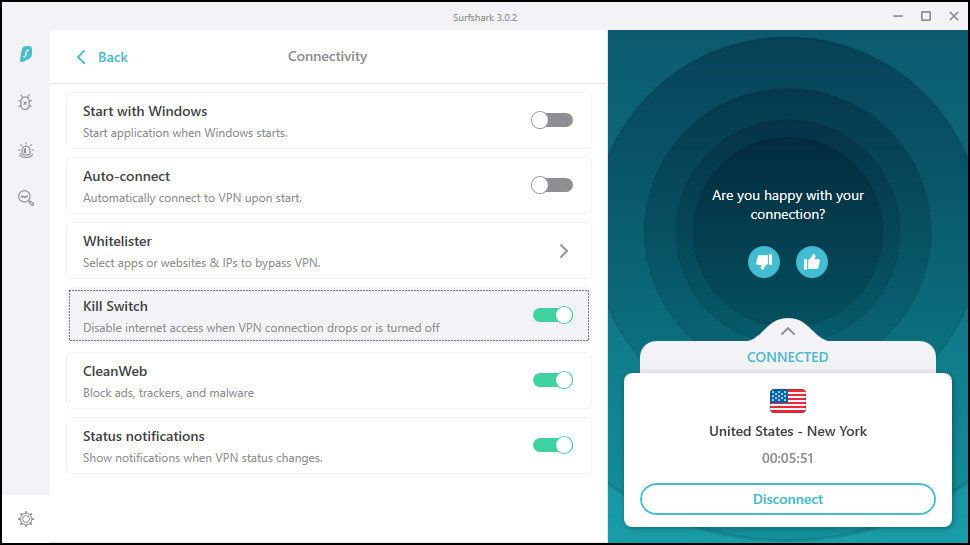
Surfshark kill switch
A kill switch is on hand to block your internet connection if the VPN drops. It works, too, but not quite as well as we'd like.
Our first issue is that it's only available in the most extreme form, where the kill switch prevents you accessing the internet at all, ever, unless you're connected to Surfshark. It's good to have that more secure option available, but most providers allow using the kill switch only if the connection drops within a VPN session. If it does kick in, you still have the option to close the app and use your regular internet connection, instead.
In another complication, although the kill switch successfully blocked our internet traffic when we forcibly closed the VPN, it didn't display any notification to alert us. If you're browsing and the VPN drops, all you'll see is your internet connection failing with no obvious reason why. This may only last for a few seconds, until the app auto-reconnects, but it's still potentially annoying.
We tried a more extreme test, simulating a failure of Surfshark's Windows service 'Surfshark Service', then manually closing an IKEv2 connection. The VPN dropped, the kill switch didn't kick in, and our device was able to use our regular unprotected connection. Meanwhile the app continued to display its status as 'Connected.' In a real-world situation, a user might continue to believe they're safe, even though the VPN and kill switch have both failed.
It's important to keep this in perspective. This is an extreme situation which we use to see just how bulletproof a kill switch is, but it's not a situation you're likely to see in real life. You might use Surfshark for years without ever seeing a service failure.
Overall, Surfshark's kill switch is effective and will protect you from all the issues you're likely to encounter. But it does have some vulnerabilities, and we think there's room for improvement.
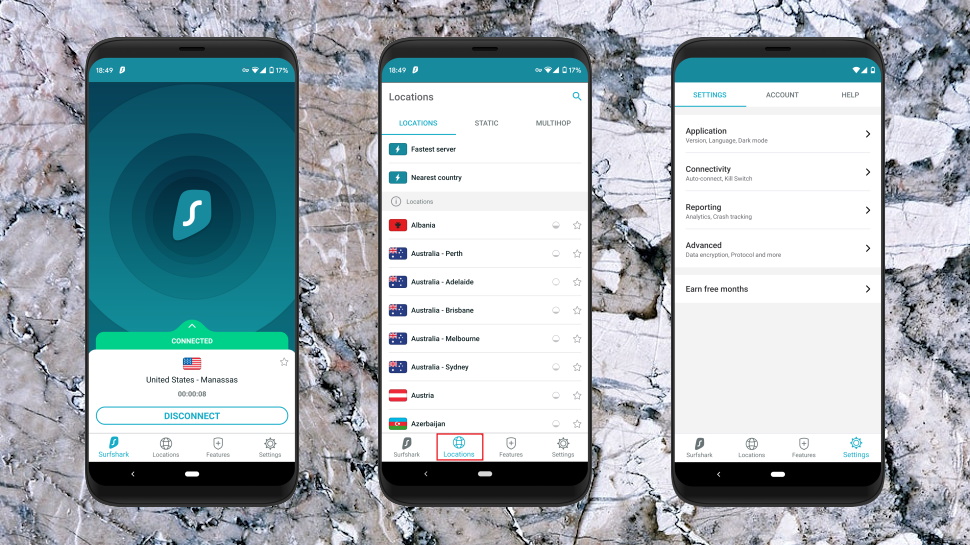
Mobile apps
Mobile VPN apps are often far more basic than their desktop cousins, but Surfshark's Android offering is surprisingly similar. It employs more or less the same interface, the same location list, multihop connections, CleanWeb's ad and malware blocking, and split tunneling for apps and websites with the Whitelister.
There's the same WireGuard, OpenVPN, IKEv2 and Shadowsocks protocol support, and a kill switch to protect you if the VPN drops.
The Android VPN app throws in extra features, too: a choice of IKEv2 encryption methods (AES-256-GGM or Chacha20Poly1305, maybe giving you better speeds), a 'use small packets' option to improve performance with some mobile networks, and the ability to automatically connect to the VPN when you access mobile, secured or unsecured networks.
And if any of this doesn't work as it should, you can send bug reports, and raise (or browse) tickets from within the app (no need to open your browser and waste time hunting for the right area of the support site).
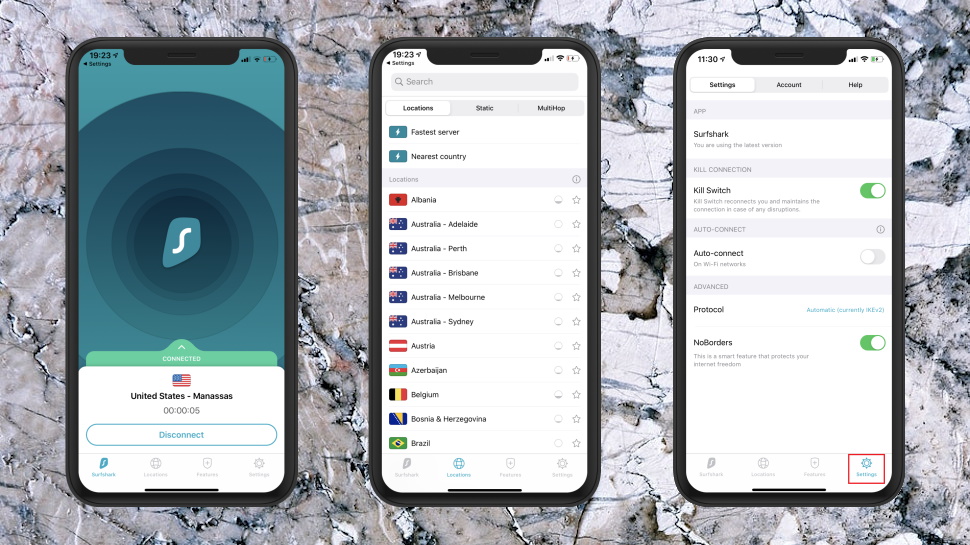
It's much the same story with Surfshark's iOS VPN app: the look and feel are very similar, and you still get the kill switch, the choice of protocols (OpenVPN, IKEv2, WireGuard) and more.
Small but welcome recent additions include iOS 14 widgets to simplify getting connected, and the ability to report bugs from within the app.
It's an impressive setup, especially for the iOS app, as software for Apple’s mobile OS is often short-changed for features in comparison to other platforms.
Put it all together and these are impressive apps, well implemented, straightforward to use, and a refreshing change for anyone tired of losing VPN functionality on mobile devices.
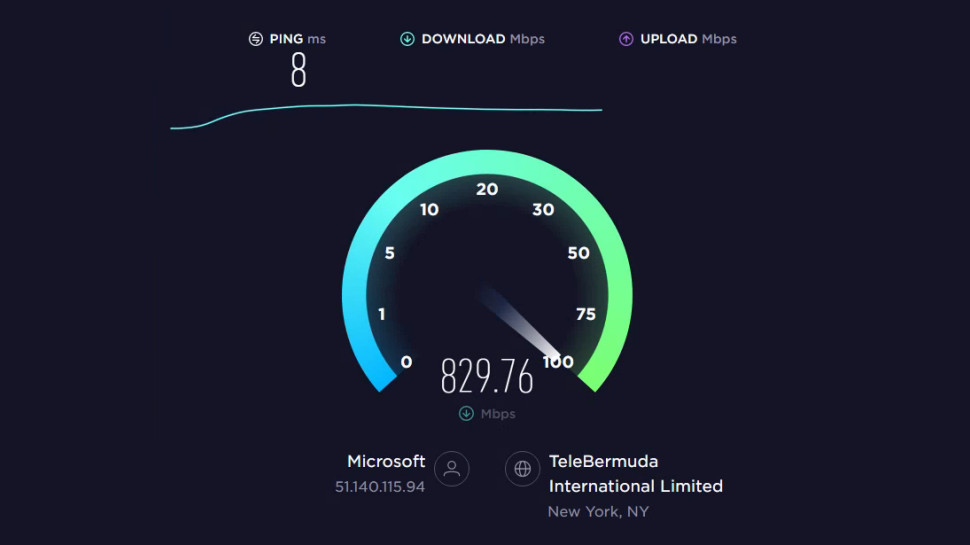
Performance
We measured Surfshark performance from a US location and a UK data center with a 1Gbps connection, giving us plenty of scope to see just what the service could do.
We installed the latest Surfshark app on our test systems, connected to our nearest location, and checked download speeds using performance testing sites including SpeedTest (the website and command line app), nPerf and SpeedOfMe. We collected at least five results from each site using WireGuard, repeated each test again with OpenVPN, and ran the full test set in both morning and evening sessions.
US OpenVPN results were a little below average at 170Mbps, and UK downloads only hit 100-110Mbps. Most top VPNs reached somewhere in the 150-300Mbps area during recent tests, and ProtonVPN managed 400-460Mbps.
Surfshark has a secret weapon in its WireGuard support, though, and switching protocols saw downloads jump to 270-300Mbps in the US, 400-475Mbps in the UK. That's also a little below average – we've seen the best of the competition reach 700Mbps and more – but Surfshark is likely to be more than fast enough for most devices and internet connections.
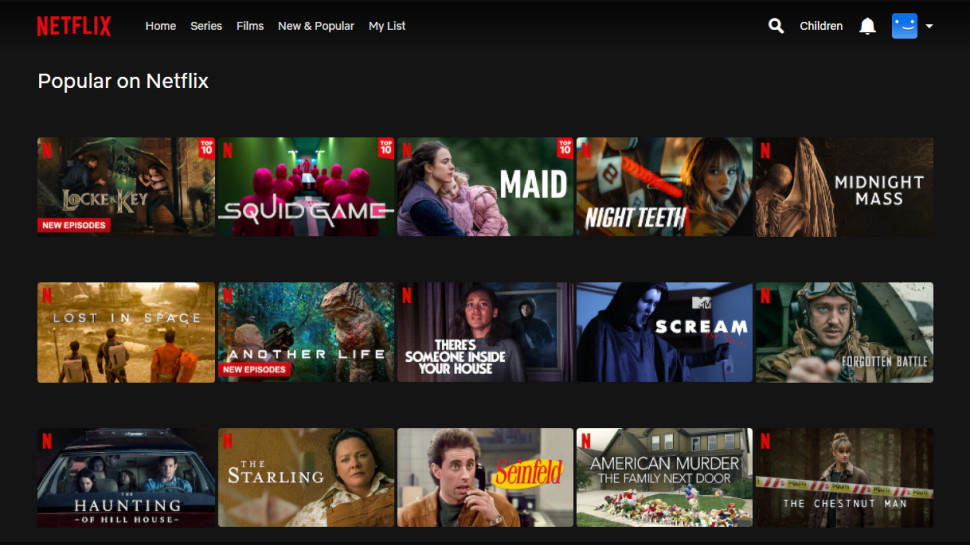
Netflix and streaming
If you're tired of VPNs which vaguely hint about their unblocking abilities, but never make any real commitment, you'll love Surfshark. Not only does the company say upfront that it unblocks Netflix, but it also names the near 20 countries where it currently works (US, France, Japan, Italy, Australia and more).
This wasn't just overblown marketing-oriented confidence, either. We were able to access US Netflix from each of our three test locations.
BBC iPlayer can sometimes be more of a challenge, but not this time. Surfshark bypassed its VPN blocking with ease, giving us access from our three test UK locations.
The good news kept coming, too, with Surfshark getting us into both US Amazon Prime and Disney Plus, giving it a perfect 100% in our unblocking tests.
That's a great result which puts Surfshark right up there with the very best unblocking VPNs. At the moment, that includes CyberGhost, ExpressVPN, Hide.me, Hola, PrivadoVPN, Private Internet Access and ProtonVPN, all of which have got us into every one of our test sites.
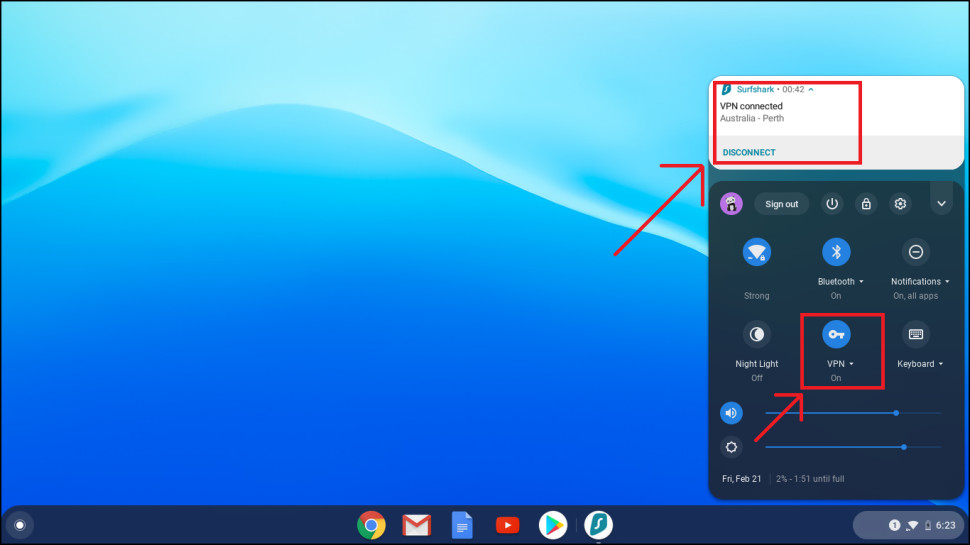
Support
If Surfshark doesn't work for you, the support site has setup and installation tutorials, troubleshooting guides, FAQs and other resources to point you in the right direction.
We've previously complained about how these articles were organized, and it seems that Surfshark was listening. Clicking 'Get Started' now takes you to a Tutorials page with articles on setting up the apps, getting the service working on other platforms and using its various features.
These aren't the horribly basic 'download and run the installer' guides you'll get from lesser VPNs, either. Take a look at this How To Set Up Surfshark on Windows (no need to read it, just scroll down). There's a video guide, step-by-step installation advice with screenshots, plus first steps guidance on choosing locations and getting connected, and basic explanations of all the main features.
If this isn't enough, Surfshark's support is available 24/7 via live chat. We tried this while trying to diagnose a connection issue, and had a friendly reply in under 60 seconds. So if you're struggling to find something on the website, it might be worth opening a chat session – the problem could be sorted out quicker than you might think.
Surfshark review: Final verdict
Speeds aren't the best, but Surfshark excels just about everywhere else, providing an array of advanced features for (initially) a very low price. An absolute must for your VPN shortlist.
- We've also highlighted the best VPN
0 comments:
Post a Comment